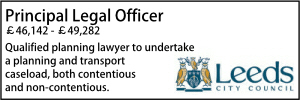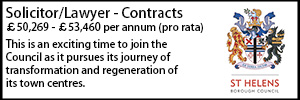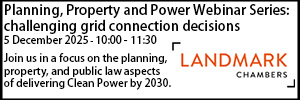London borough fails in Planning Court challenge to ministerial approval for works on HS2 ecological mitigation site
- Details
The London Borough of Hillingdon has lost a judicial review challenge over a decision by government ministers to allow High Speed Two’s appeal over the council’s refusal to grant approval for proposed works for the creation of an ecological mitigation area.
High Speed Two, which is delivering the HS2 project, had applied to Hillingdon for approval, under schedule 17 to the High Speed Rail (London – West Midlands) Act 2017, for plans and specifications for the works associated with the creation of the Colne Valley Viaduct South Embankment wetland habitat ecological mitigation area (“the Site”) comprising earthworks and fencing.
The Secretary of State for Transport and the Secretary of State for Housing, Communities and Local Government allowed High Speed Two’s appeal on 4 March 2019. They accepted the Inspector's recommendation to allow the appeal in respect of matters of ecological value. However, they disagreed with his recommendation, and some of his reasoning, in relation to matters of archaeological interest. Therefore, they decided to allow the appeal and grant approval for the application.
Hillingdon’s challenge in London Borough of Hillingdon, R (on the application of) v Secretary of Transport & Ors [2019] EWHC 3574 was limited to the conclusions reached by the defendants in respect of the archaeological importance of the Site.
Mrs Justice Lang said the issues raised in the claim were “potentially of importance to the determination of other applications for approval under schedule 17 to the HS2 Act, both in this local authority area and other areas”.
Hillingdon challenged the Secretaries of State’s decision on three grounds.
First, in allowing High Speed Two’s appeal, the defendants unlawfully misconstrued schedule 17 to the HS2 Act as:
i) requiring or allowing the decision maker to grant consent for works with no substantive information as to the impact of those works;
ii) imposing an obligation on local authorities to carry out their own investigations as to impact, in order to be able to rely on the grounds for refusal under schedule 17; and
iii) offering qualifying authorities no meaningful control over works included within schedule 17.
Second, in allowing High Speed Two’s appeal, the defendants unlawfully failed to take account of a material consideration, namely, the impact of the scheme on the archaeological interest of the site, in circumstances in which there was evidence of archaeological interest.
Third, in allowing High Speed Two’s appeal, the defendants failed to provide any, or any adequate reasons to explain their disagreement with the Inspector that the parallel EMRs [Environmental Minimum Requirements] process did not give the claimant the control intended by schedule 17 to the HS2 Act.
Mrs Justice Lang granted Hillingdon permission to apply for judicial review, as the grounds were arguable, but dismissed the application on all three grounds.
Dealing with grounds 1 and 2 together, as they overlapped, she said that in her judgment the case turned on the proper construction of Schedule 17 to the HS2 Act. “I consider that the HS2 Act has expressly constrained the decision-making function of an approved local planning authority, in a way which is unusually restrictive, in comparison with the determination of other types of planning applications, and that is the reason why the Claimant considers it has no meaningful control over the Works at the Site.”
The judge said the defendants were correct to hold that, on a proper construction of paragraph 3(6) of schedule 17, the onus was on the local planning authority to demonstrate that the design or external appearance of the earthworks ought to and could reasonably be modified to preserve the site of archaeological interest; or that the earthworks ought to and could reasonably be carried out elsewhere within the development's permitted limits.
She added that the Secretaries of State were entitled to go on to find that Hillingdon’s reasons for refusal did not put forward any evidence or submissions to address the criteria [for refusal of approval] in paragraph 3(6).
“The Claimant did not indicate how, in its view, the earthworks should be modified to preserve matters of archaeological interest, nor that the earthworks ought to, and could reasonably be, carried out elsewhere. In my view, the Claimant could not do so, on the state of the evidence before it, and therefore it erred in relying on paragraph 3(6) when the criteria were not made out. For reasons which I explain further below, the Defendants were not suggesting at DL28 that the Claimant should commission its own evidence, in addition to assessing the information provided by the IP [High Speed Two].”
The judge said there was no express provision in schedule 17 empowering a local authority to seek further information from High Speed Two. However, she considered that such a power could readily be implied as part of a local authority's decision-making function.
“In my view, the IP is also under an implied obligation to co-operate with reasonable requests for information from a local authority, as part of its role as the nominated undertaker who is statutorily required to seek approval from the local authority for its developments and to submit the relevant information,” she added.
Mrs Justice Lang said that in this case, Hillingdon adopted a sensible approach in letting High Speed Two know of its concerns and asking for more information prior to making its decision.
“The IP acted responsibly in seeking to address those concerns, by supplying further information. In my view, the further information was of real value and enabled the Claimant and GLAAS [Greater London Archaeological Advisory Service] to understand the position at this particular Site, which was somewhat unusual, because essential investigatory work had not yet been done. If the Defendants were expressing the view, at DL36, that the initial information supplied was sufficient, without this further information, then I disagree with them.”
The judge said that the information which Hillingdon received from High Speed Two, taken as a whole, was sufficient to enable it to approve the application, having regard to the council’s limited role under the statutory scheme and guidance.
Mrs Justice Lang noted that the statutory guidance (paragraph 4.4) warned local planning authorities that they should not seek to modify or replicate the controls in the EMRs. “As the Defendants said, at DL39, it was not the purpose of the schedule 17 procedure to replicate or police the process of investigation set out in the EMRs.
“In my view, it follows that it was not appropriate for the Claimant to seek to commission its own experts to carry out investigations and assessments. It should make its decision on the basis of the material provided by the IP. The Claimant has misunderstood the purport of DL28 in that regard.”
The judge said that as a qualifying authority, and in accordance with its undertakings, the correct approach was for Hillingdon to determine the application on the basis that the scheme of archaeological investigation, study and conservation created under the EMRs would be applied by High Speed Two, as nominated undertaker, in accordance with the EMRs General Principles and its contractual obligations under the HS2 Development Agreement.
If a change to the specifications or plans was required, a further application under schedule 17 would be made. “It was not the Claimant's role to seek to enforce the controls in the EMRs by withholding approval,” the judge said.
Mrs Justice Lang added that whilst the council and the Inspector “understandably” took the view that the application should have been postponed until after the further archaeological investigations were concluded, ultimately it was not their decision to make.
As to ground 2, the judge said there was ample evidence before the Inspector and the defendants about the archaeological significance of the Site and the potential adverse impacts of construction works. The ministers had given this evidence due consideration, she said.
On ground 3, Mrs Justice Lang found that the ministers’ decision letter met the required standard of reasons. “It gave clear reasons for the Defendants' conclusions on the main issues in the appeal.”
Sponsored articles
Walker Morris supports Tower Hamlets Council in first known Remediation Contribution Order application issued by local authority
Unlocking legal talent
Lawyer (Planning and Regulatory)
Legal Director - Government and Public Sector
Contracts Lawyer
Locums
Poll












































